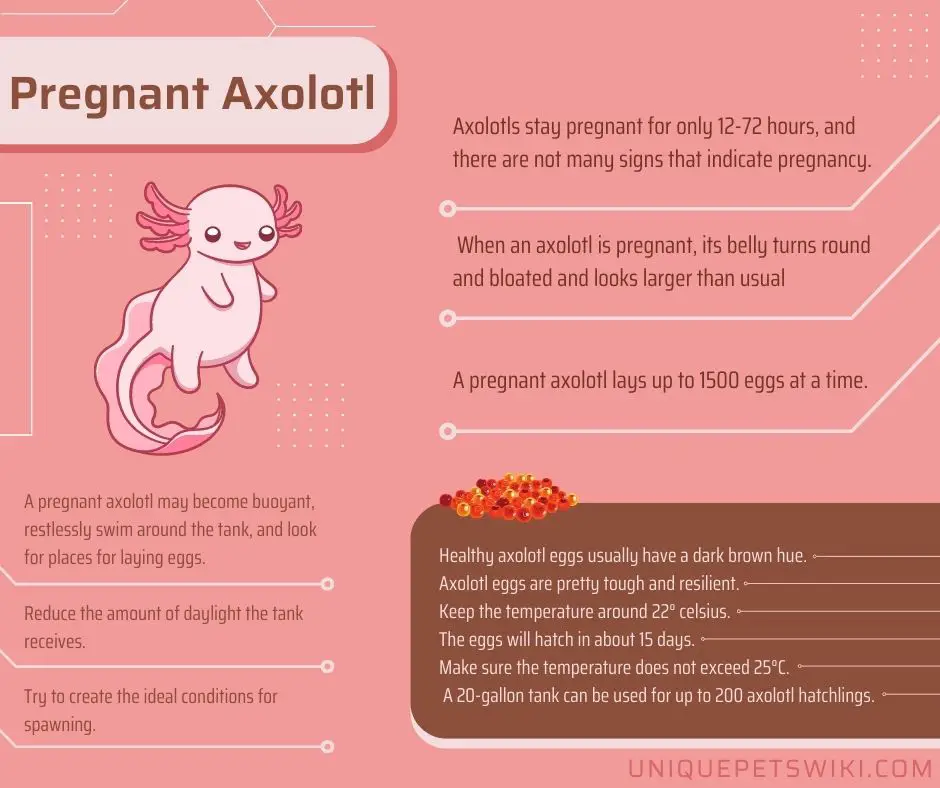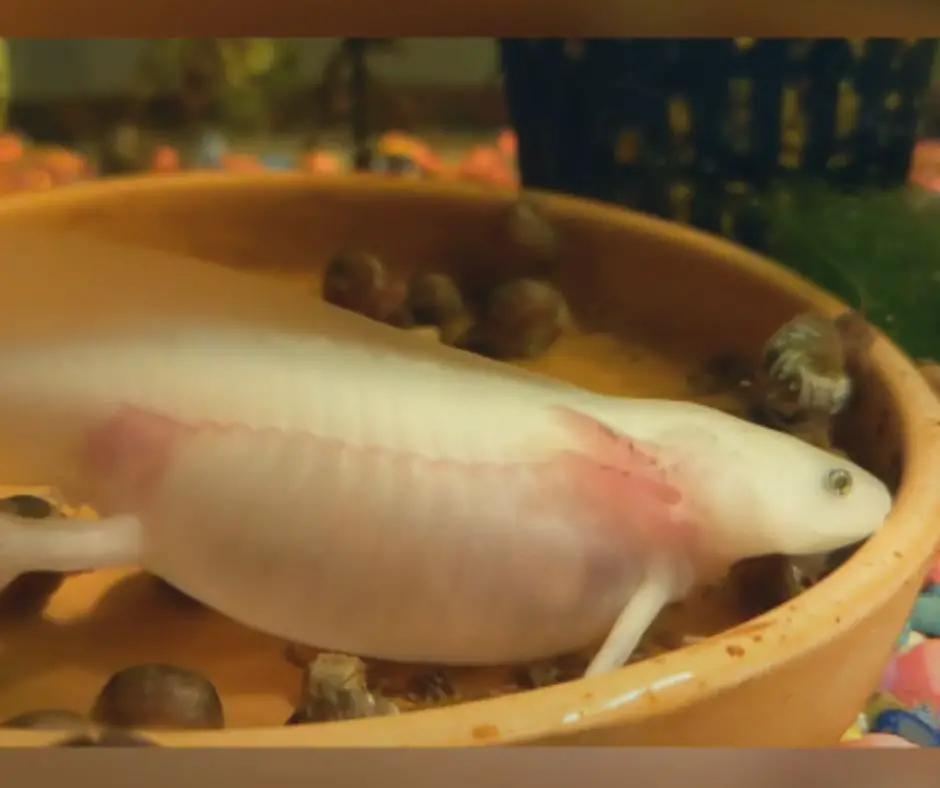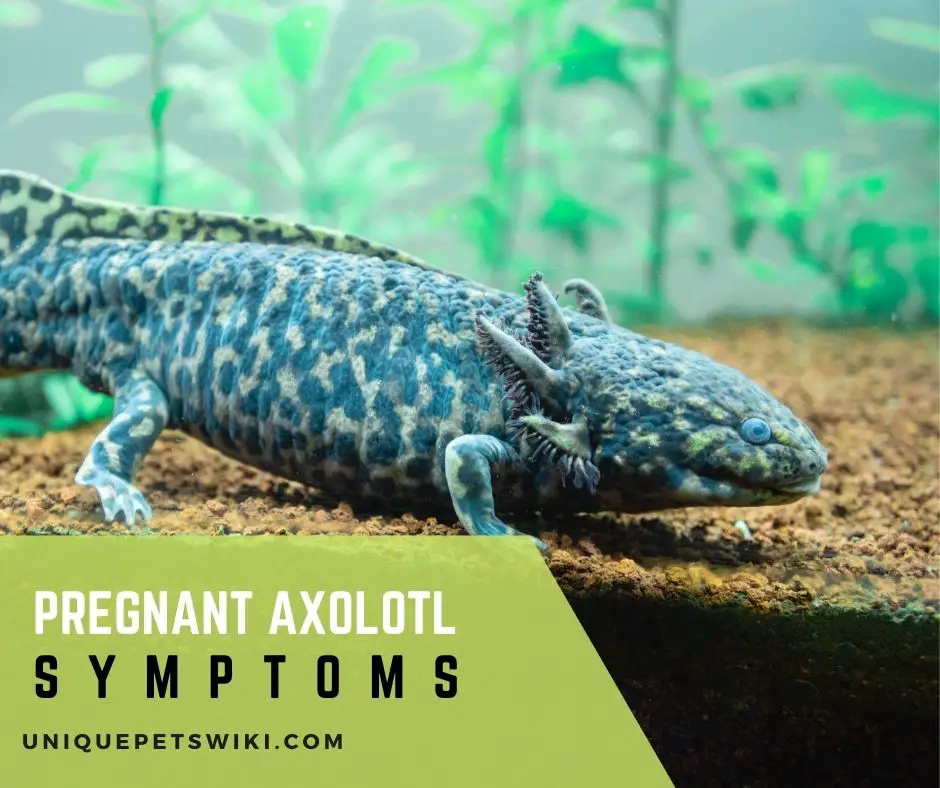To take care of an axolotl, you must understand the basics of the animal’s physiology, including the signs and symptoms of its pregnancy. The ability to recognize pregnancy symptoms is a requirement for breeders and owners.
Many axolotl enthusiasts want to learn about the symptoms of pregnancy in axolotls. By recognizing the symptoms, you can take care of your axolotl more effectively and figure out when the animal needs special care.
In this post, we will discuss everything you need to know about pregnancy in axolotls. Here you will also learn how to take care of a pregnant axolotl, and find answers to some relevant questions.
Contents
How to Tell If an Axolotl Is Pregnant
Axolotls stay pregnant for only 12-72 hours, and there are not many signs that indicate pregnancy.
Normally, an axolotl’s stomach size is the same as its head. When an axolotl is pregnant, its belly turns round and bloated and looks larger than usual. This is because the animal carries a sack of eggs in the belly.

Pregnancy and its differences from a sick axolotl
To learn if an axolotl is pregnant or sick, monitor its behaviors. In axolotls, some common sickness symptoms include lethargy, loss of appetite, loss of scales, and noticeable injuries to gills, limbs, or tail.
Bloating is somewhat confusing. It can be a sign of illness, but it can also signify pregnancy. Bacterial infection, kidney failure, impaction, thyroid disorders, and hyperthermia can also cause bloating.
Learn as much as possible about the diseases and disorders of axolotls. And if you notice symptoms of illness, address them immediately. If needed, take your little friend to a veterinarian.
If an axolotl is pregnant, she will carry on as usual despite a slightly bloated belly. She will lay eggs quickly, usually within 12-72 hours. The duration depends on the number of eggs.
A pregnant axolotl may become buoyant, restlessly swim around the tank, and look for places for laying eggs. The salamander will lay eggs on anything stable enough, such as plants.
How to Care for a Pregnant Axolotl
Reduce the amount of daylight the tank receives. Less daylight exposure is good for pregnant axolotls. Try to create the ideal conditions for spawning.
As soon as the female axolotl has finished spawning, separate her from the male axolotl. It’s important for the female axolotl to recover from what she has gone through, and she needs some time to recuperate.
There is no need to make changes in how you feed your axolotl. Feed a pregnant axolotl as usual.
No need for increased feeding times, and no need for mineral supplements. Overeating can adversely affect the overall well-being of your little friend. Just leave her alone and don’t worry. She will start laying eggs.
How Long Does an Axolotl Stay Pregnant
The duration of an axolotl’s pregnancy can range between 12 and 72 hours. That means spawning happens pretty quickly after mating.
The process of laying eggs is rather long. To empty a full clutch of eggs, the animal can take up to 72 hours. Yes, the delivery can take three full days.
A pregnant axolotl lays up to 1500 eggs at a time. So, if you are planning to breed axolotls, be prepared for the arrival of many little ones.

What to Do When Axolotls Lay Eggs?
Once your pregnant axolotl has laid eggs, remove them from the tank and keep them in a separate one. This is because axolotls tend to eat their eggs.
However, if the axolotl has laid eggs in several parts of the tank such as on top of plants, rocks, and tank decorations, consider keeping the axolotl in a separate tank rather than removing the eggs from the tank.
Also, check the eggs. Healthy eggs usually have a dark brown hue. Albino axolotls, however, lay white eggs that do not have any pigmentation.
You can transfer eggs with your bare hands or turkey baster. Just clean your hands before you touch the eggs. Although eggs are pretty tough and resilient, handle them as carefully as you can.
If the eggs are attached to the plants, don’t try to separate the eggs from the plants. Rather, put the entire plant in a separate tank. This tank should be placed in a safe place. Also, ensure the proper temperature of the water.
The water temperature determines when the eggs will hatch. Keep the temperature around 22° Celsius and the eggs will hatch in about 15 days.
The eggs will hatch sooner if the temperature is slightly higher. But make sure the temperature does not exceed 25°C.
The size of the container you are keeping the eggs in is also a matter of consideration. A 20-gallon tank can be used for up to 200 axolotl hatchlings, but this is not preferable.
We recommend using a tank of this size for around 100 hatchlings.
Fox Run Heat-Resistant Glass Baster
- DON'T GET BURNED: Heat-resistant glass tube with a silicone bulb, so it's easy and intuitive to use without any of the risk.
- MORE JUICE, MORE FLAVOR: Use to baste your oven-roasted meats to keep them moist, juicy and flavorful.
- SLEEK AND FUNCTIONAL DESIGN: Clear so you can see contents inside. The glass tube also means it won't melt, unlike other plastic basters.
- EASY TO CLEAN: This baster is dishwasher safe, though handwashing is recommended so that it may serve you well for many years to come!
- MEASUREMENTS: This baster weighs 3.2 ounces and has dimensions 2 x 2 x 12 inches.
Last update on 2022-12-30 / Affiliate links / Images from Amazon Product Advertising API
Conclusion
A slightly bloated belly is the only notable symptom of a pregnant axolotl. And once this symptom appears, the animal starts laying eggs within a day or so.
If there are multiple additional symptoms, chances are your axolotl is sick, not pregnant.
If you want to hatch the eggs, keeping them in a safe place, is important. And leave the mom alone in the tank and allow her to recover from what she has been through.
We hope you are better prepared to deal with your axolotl’s reproduction and pregnancy.
Aquarium Tank, Glass, 20 Gal
- Our all-glass 20-gal aquarium has sides and a bottom of triple-strength, clear glass welded together with silicone rubber. This strong, leakproof aquarium will last for years and is nonreactive with seawater. Top frame is designed for a recessed cover (see item #671235 Aquarium Cover). Dimensions: 24 x 12 x 16" H.
- From our beginnings in 1927, Carolina Biological Supply Company has grown to become a leading supplier of science teaching materials for all levels of education. Today, from our headquarters in Burlington, North Carolina, we serve customers worldwide, including teachers, professors, homeschool educators, hobbyists, and professionals in health and science-related fields.
- When you shop with Carolina, you're not alone! All of our products are backed by unparalleled technical support, available from 8am to 6:30pm, ET, Monday through Friday. Live chat is available from 8am to 5:30pm ET, Monday-Friday. Contact information (Live Chat, email, and phone) is provided after placing your order at Amazon.
Last update on 2022-12-29 / Affiliate links / Images from Amazon Product Advertising API


